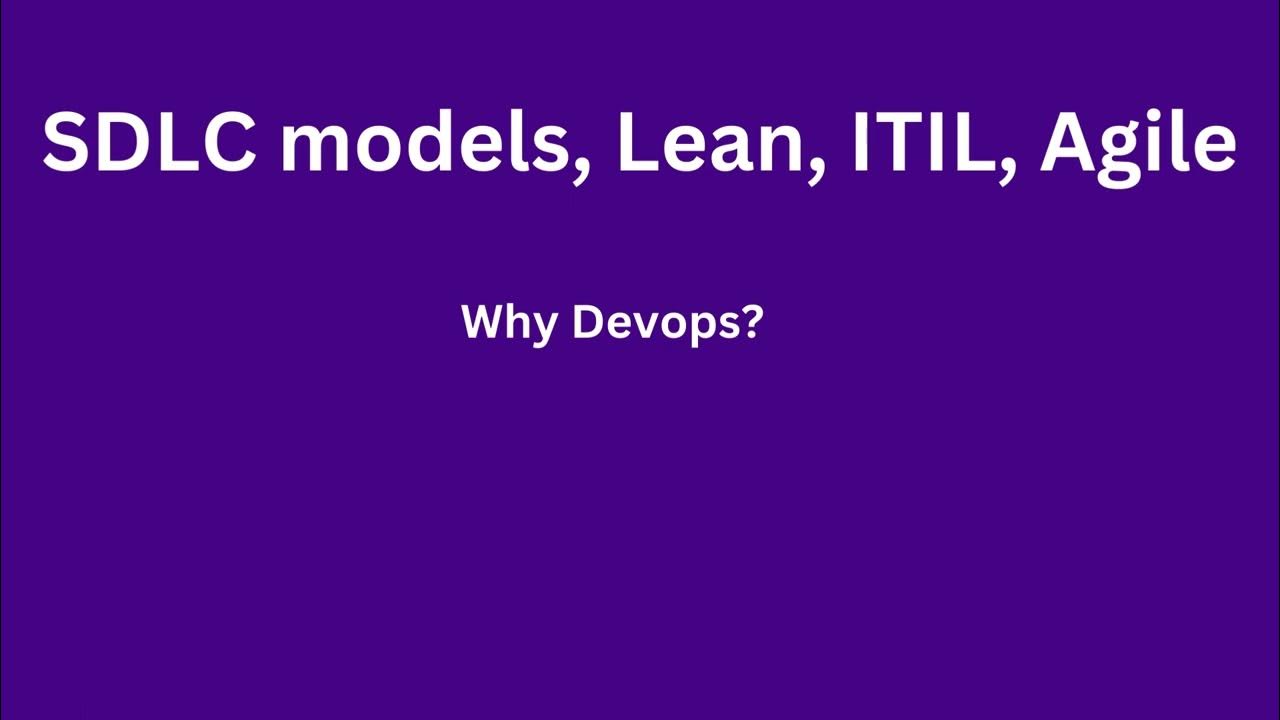Agile vs Waterfall Methodology | Difference between Agile and Waterfall | Intellipaat
Summary
TLDRThis Intellipaat session explores the differences between Agile and Waterfall methodologies in software development. It outlines the Agile approach with its short cycles, customer feedback integration, and adaptability, as well as the Waterfall model's structured, sequential phases suitable for projects with clear requirements. The video discusses benefits, industry impacts, and when each methodology might be preferable, concluding that the choice depends on project needs and market dynamics.
Takeaways
- 😀 Agile and Waterfall are two distinct methodologies used in software development with different approaches to project management and execution.
- 🔄 Agile promotes shorter development cycles and prioritizes customer feedback, adapting the product through iterative cycles.
- 🔒 Waterfall is an older model characterized by a linear, sequential process from requirements to maintenance, suitable for projects with established and unchanging requirements.
- 📊 Agile offers transparency by involving customers in the development process, ensuring they are updated on the project's progress and can provide input.
- 💰 Agile can lead to predictable costs and schedules due to its shorter, more manageable sprints.
- 🔄 The flexibility of Agile allows for changes in direction based on market demands and customer feedback, accommodating the fast-paced nature of modern business.
- 🛠️ Waterfall's structured phases (requirements, design, implementation, testing, deployment, maintenance) are beneficial for projects with clear, predefined goals.
- 📝 Waterfall's emphasis on documentation makes it easy to manage and follow, with each phase building on the last in a clear progression.
- 🏢 Companies like British Telecom and Cisco have shifted to Agile, seeing increased profits and adaptability in their operations.
- 🏛️ Traditional and government agencies, such as the Ministry of Defense or NASA, may still use Waterfall due to the rigid requirements and established processes.
- 🔍 The choice between Agile and Waterfall should be based on the specific needs of the project, considering factors like market dynamics, customer involvement, and project scope.
Q & A
What are the two software development methodologies discussed in the video?
-The two software development methodologies discussed in the video are Agile and Waterfall.
What does Agile promote in software development?
-Agile promotes shorter development life cycles, prioritizing customer feedback, and making iterative changes based on that feedback.
What are the main phases of the Agile development cycle?
-The main phases of the Agile development cycle include planning, designing, developing, testing, deploying, reviewing, and launching, which are repeated after receiving feedback.
What are some benefits of using the Agile methodology?
-Some benefits of Agile include transparency, predictable costs and schedule, adaptability to change, and improved product quality based on customer feedback.
What type of projects is the Waterfall model best suited for?
-The Waterfall model is best suited for smaller projects with well-defined and non-uncertain requirements.
Can you describe the Waterfall model's development phases?
-The Waterfall model's development phases include requirements, design, implementation, testing, deployment, and maintenance.
What are the benefits of the Waterfall model according to the video?
-The benefits of the Waterfall model include ease of management, suitability for smaller projects, clearly defined stages, and thorough documentation.
Which companies have shifted from traditional models like Waterfall to Agile and seen increased profits?
-Companies like British Telecom, National Bank of Canada, Cisco, and Lego have shifted from traditional models to Agile and seen increased profits.
Why might government agencies still use the Waterfall model?
-Government agencies might still use the Waterfall model because they have established requirements that need to be followed rigidly and do not face the same market pressures to adapt quickly.
What are the criteria used to compare Agile and Waterfall methodologies in the video?
-The criteria used to compare Agile and Waterfall methodologies include lifecycle, planning, requirements, progress, team size, emphasis, and the goal of the methodology.
How does the video suggest deciding between Agile and Waterfall methodologies?
-The video suggests deciding between Agile and Waterfall based on the specific requirements and context of the project, such as market dynamics, need for customer feedback, and the rigidity of requirements.
Outlines

This section is available to paid users only. Please upgrade to access this part.
Upgrade NowMindmap

This section is available to paid users only. Please upgrade to access this part.
Upgrade NowKeywords

This section is available to paid users only. Please upgrade to access this part.
Upgrade NowHighlights

This section is available to paid users only. Please upgrade to access this part.
Upgrade NowTranscripts

This section is available to paid users only. Please upgrade to access this part.
Upgrade NowBrowse More Related Video

Agile vs Waterfall: The 3 Most Impactful Differences

Software Testing Tutorial #7 - Software Testing Life Cycle (STLC)

27. OCR A Level (H046-H446) SLR6 - 1.2 Development methodologies part 1

DevOps Tutorial: SDLC models, Lean, ITIL, Agile & Why Devops?

Project Management: Waterfall, Agile, & Hybrid Approaches

Lecture 07: Life Cycle Model (Contd.)
5.0 / 5 (0 votes)